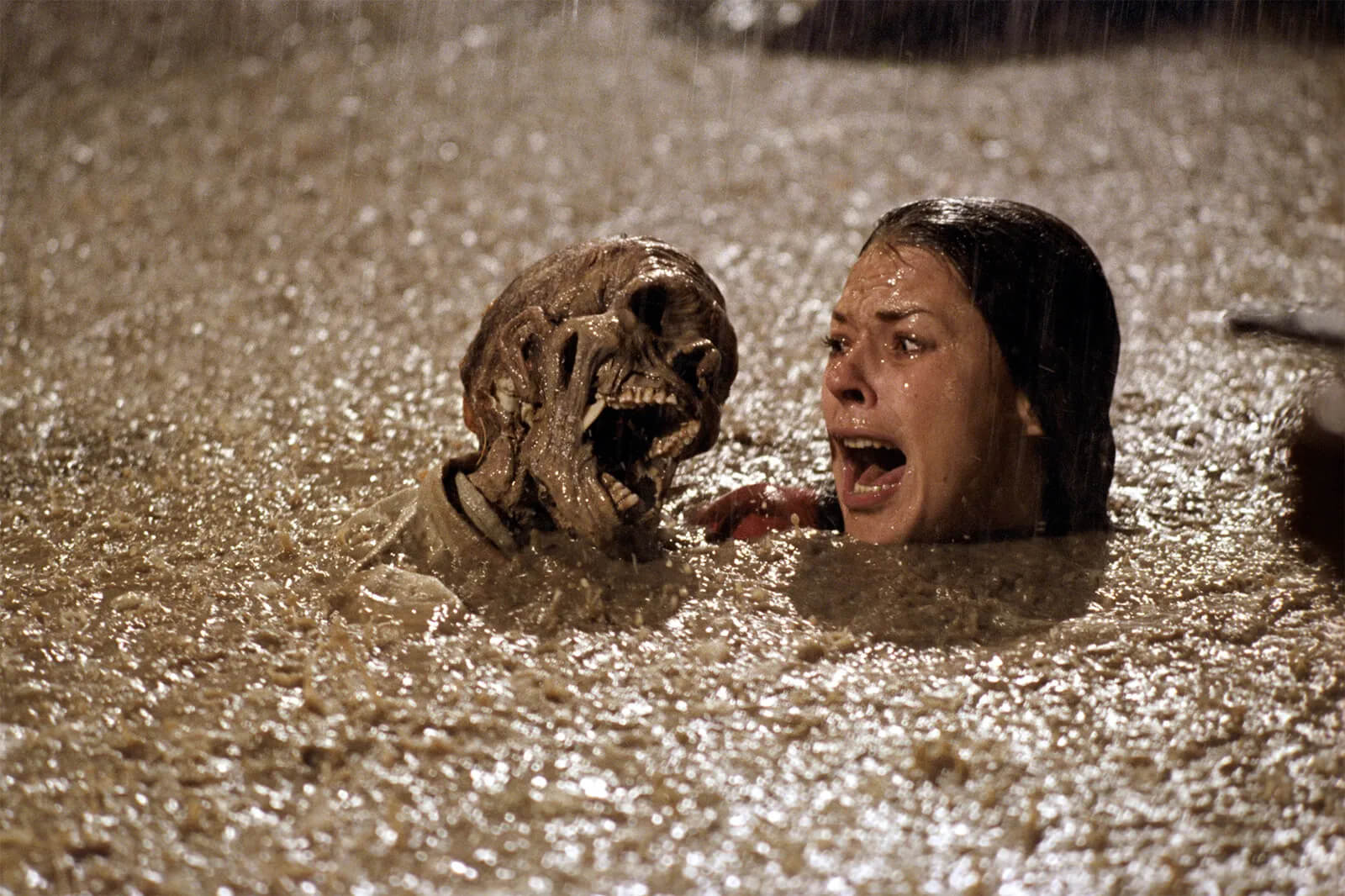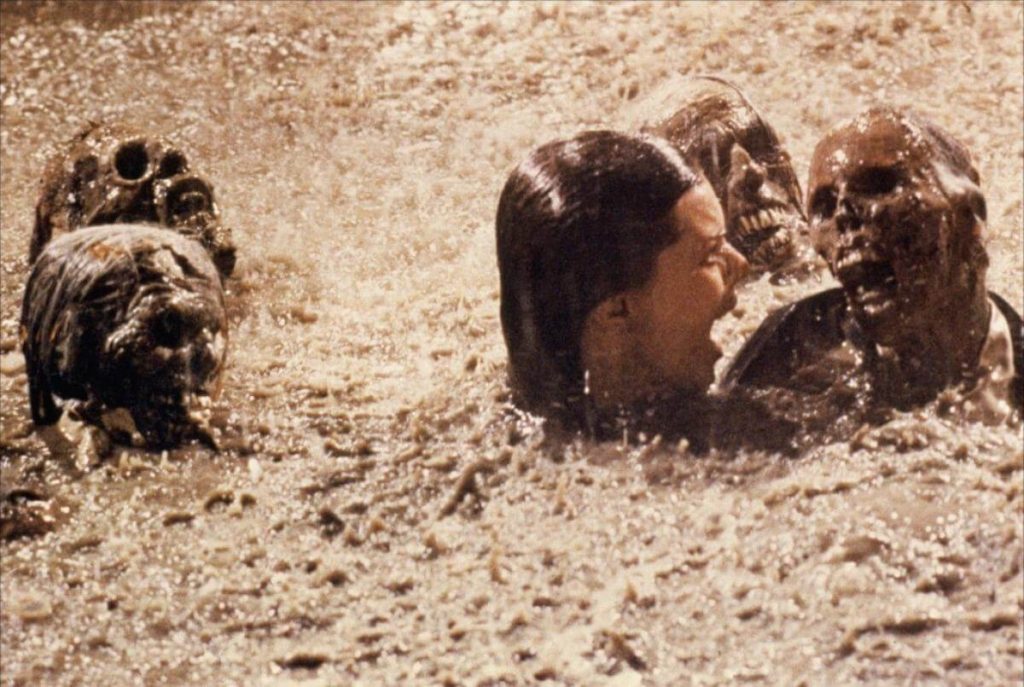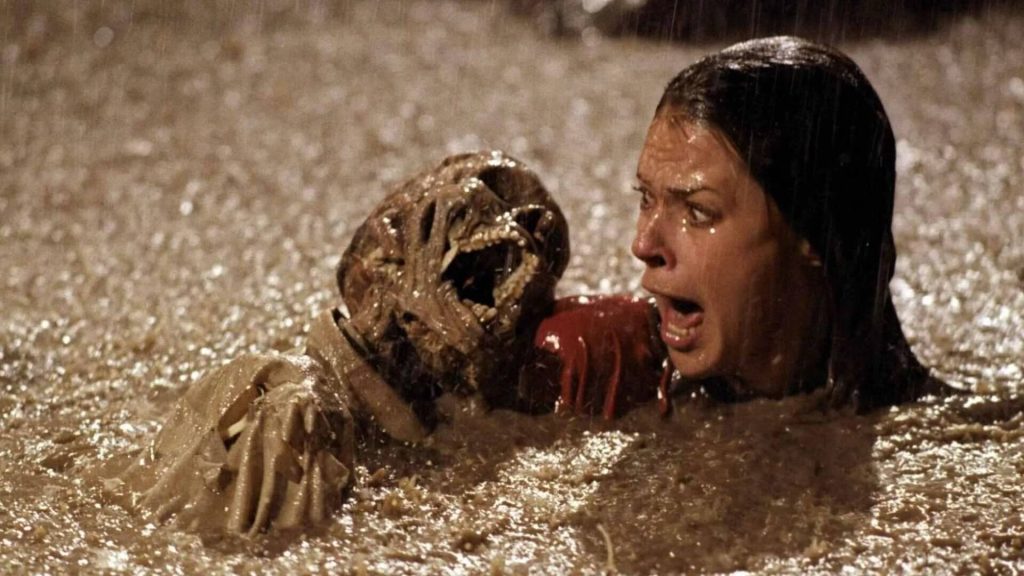the 1982 movie poltergeist used real skeletons as – tymoff

In the annals of horror cinema, few films have achieved the iconic status and enduring legacy of “Poltergeist.” Released in 1982, this supernatural thriller directed by Tobe Hooper and produced by Steven Spielberg continues to captivate audiences with its spine-tingling storyline, innovative special effects, and unforgettable characters.
However, beneath the surface of cinematic mastery lies a bone-chilling revelation that has shocked and intrigued viewers for decades: the use of real human skeletons as props in the production of the film.
Setting the Stage: The Making of “Poltergeist”
Before delving into the macabre details of the skeletons’ inclusion in “Poltergeist,” it’s essential to understand the context in which the film was made. Set in a suburban California neighborhood, the story revolves around the Freelings, a seemingly ordinary family whose lives are disrupted by malevolent supernatural forces. As their home becomes a battleground between the living and the dead, the Freelings must confront their fears and unravel the mysteries of the sinister entity known as the poltergeist.
Behind the scenes, the production of “Poltergeist” was a collaborative effort involving a talented cast and crew dedicated to bringing the story to life. With visionary director Tobe Hooper at the helm and acclaimed producer Steven Spielberg providing creative guidance, the film combined elements of horror, suspense, and supernatural intrigue to deliver a truly immersive cinematic experience.
The Shocking Revelation: Real Skeletons on Set
One of the most unsettling aspects of “Poltergeist” is the use of real human skeletons as props in several key scenes. According to urban legend and corroborated accounts from cast and crew members, the production team opted to use authentic skeletons obtained from medical suppliers instead of artificial replicas for added realism.
The decision to incorporate real skeletons into the film’s production was not uncommon in Hollywood at the time. Due to budget constraints and the logistical challenges of acquiring lifelike props, filmmakers often turned to unconventional sources for materials, including medical schools, anatomical suppliers, and even archaeological excavations.
In the case of “Poltergeist,” the use of real skeletons was purportedly motivated by a desire to enhance the film’s authenticity and evoke a genuine sense of dread among viewers. By introducing actual human remains into the set design, the filmmakers sought to imbue the scenes with an eerie atmosphere and visceral impact that would linger long after the credits rolled.

Ethical and Legal Implications
While the use of real human skeletons in “Poltergeist” may have contributed to the film’s haunting aesthetic, it also raises ethical and legal questions regarding the treatment of human remains in the entertainment industry. Critics have argued that the practice of employing real skeletons as props is morally objectionable and disrespectful to the deceased, as it commodifies human bodies for the purpose of entertainment.
Furthermore, the use of real skeletons in film production may run afoul of various laws and regulations governing the handling and disposition of human remains. In many jurisdictions, the sale and purchase of human skeletons are subject to strict licensing requirements and oversight by government agencies tasked with ensuring compliance with ethical standards and respect for human dignity.
In recent years, increased awareness of these issues has prompted greater scrutiny of Hollywood’s use of real skeletons in film production. Advocacy groups and industry professionals have called for greater transparency and accountability in the sourcing and use of human remains, advocating for the adoption of ethical guidelines and best practices to govern their handling and treatment on set.
Legacy and Impact
Despite the controversy surrounding its production, “Poltergeist” remains a seminal work of horror cinema that continues to exert a profound influence on subsequent generations of filmmakers and audiences alike. Its innovative blend of practical effects, atmospheric storytelling, and psychological terror has cemented its status as a cult classic and a benchmark for excellence in the genre.
However, the revelation of the film’s use of real human skeletons serves as a sobering reminder of the ethical complexities inherent in the creation of cinematic art. As audiences revisit the eerie corridors of the Freeling house and confront the spectral forces lurking within, they are confronted not only with the fear of the unknown but also with the uncomfortable truths that lie beneath the surface of the silver screen.
faqS:
- Were real human skeletons actually used in the filming of “Poltergeist”?
- Yes, according to various accounts from cast and crew members, real human skeletons were used as props in certain scenes of the movie “Poltergeist.” This decision was made to enhance the authenticity and eerie atmosphere of the film.
- Where did the filmmakers acquire the real human skeletons?
- The exact source of the real human skeletons used in “Poltergeist” has been a subject of speculation and debate. However, it’s believed that the skeletons were obtained from medical suppliers or other unconventional sources commonly used by filmmakers at the time.
- Is the use of real human skeletons in film production legal?
- The legality of using real human skeletons in film production varies depending on jurisdiction and applicable laws. In many cases, the sale and purchase of human remains are subject to strict regulations and oversight by government agencies to ensure ethical treatment and respect for human dignity.
- What ethical concerns are raised by the use of real human skeletons in movies?
- The use of real human skeletons as props in films raises significant ethical questions regarding the treatment of human remains and the commodification of human bodies for entertainment purposes. Critics argue that such practices are morally objectionable and disrespectful to the deceased.
- Has the use of real human skeletons in film production been addressed by industry organizations?
- In recent years, there has been increased awareness and scrutiny of the use of real human skeletons in film production by industry organizations and advocacy groups. Calls for greater transparency, accountability, and adherence to ethical guidelines have prompted discussions within the entertainment industry.
- Are there alternatives to using real human skeletons in film production?
- Yes, there are alternatives to using real human skeletons in film production, including artificial replicas and digital effects. Advances in technology have made it possible to create lifelike props and special effects without resorting to the use of real human remains.
- Does the controversy surrounding the use of real human skeletons affect the legacy of “Poltergeist”?
- While the controversy surrounding the use of real human skeletons in “Poltergeist” has sparked debate among fans and critics, it has not diminished the film’s status as a cult classic and a landmark achievement in horror cinema. However, it serves as a reminder of the ethical complexities inherent in the creation of cinematic art.

To conclude:
In the final analysis, “Poltergeist” stands as a cautionary tale of the lengths to which filmmakers may go in pursuit of authenticity and realism, reminding us that the boundary between art and reality is often thinner than we care to admit. Check: www technicaldhirajk com: Your Ultimate Guide to Instagram Growth
As we peer into the darkness and confront the shadows that dwell within, we are forced to reckon with the unsettling reality that some horrors are all too real.

